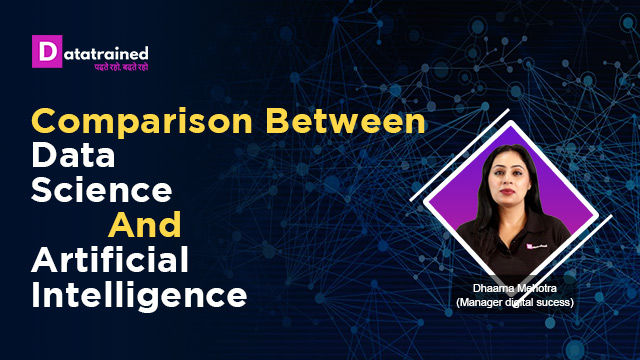In this video, you will know how data science is transforming our lives through Retail And E-Commerce.
There is nothing in the world that a bit of shopping cannot fix!!!!! But shopping these days has also taken a new and exciting turn, which is online shopping also popularly known as the e-commerce industry! The importance of data nowadays has reached new heights that businesses are taking business decisions only after a thorough evaluation of relevant data
1.Recommendation engines
Providing recommendations assists retailers to boost sales and determining trends. the engines are comprised of complex machine learning and deep learning algorithms and are made in such a way so that they are able to keep a track record of the individual behavior of clients, analyze their consumption patterns and provide them recommendations based on this data. This is a complex process and involves a great deal of data filtering and reading and all this passes through the machine learning algorithm.
2.Market Basket Analysis
Market basket analysis works on the concept- if a customer purchases one group of products, they are more or less likely to purchase another set of related items. This mainly involves a lot of how the advertising of the item is done by the retailers, and in the world of e-commerce, customer data is the best place to look for potential buying impulses. Similar to search suggestions, market basket analysis also functions with a machine learning or deep learning algorithm.
3.Warranty Analytics
Warranty data analysis depends upon the estimation of failure distribution based on data including the age as well as the number of returns and the age and number of surviving units in the industry. That’s a great way for retailers to flip warranty challenges into actionable insights and price their warranties and offer it as a bundle to customers with the purchase of their goods.
4. Price Optimization
The price must not only include the costs to make the product but additionally should also take into account the capability of a consumer to pay for that product while keeping in mind competitor costs as well in order to drive profits. All of this is computed with the help of machine learning algorithms again, the algorithm analyses a number of parameters from the data like the flexibility of prices, location of the customer, the buying attitude of a customer, and competitor pricing. It then comes up with the perfect price that would benefit all the parties.
5. Inventory Management
The retailers should be able to stock the right commodities in the right quantities in order to supply it to the customer when there is a demand for that commodity .to achieve this, the stock and supply chains are analyzed thoroughly. Powerful machine learning algorithms examine the information between the elements and supply in detail and detect correlations and patterns among purchases. The analyst then analyzes this data and comes with a strategy to boost sales, confirm timely delivery and inventory management.
6.Location of New Stores
Before a business is able to determine where to open up their stores, they do a lot of analysis and figure out what the best place to set up shop would be. The analyst analyzes the data giving value to demographics. An analysis of demographic information and zip codes gives a basis for understanding the potential of the market. And competitor markets are also looked at. Additionally, a retailer's network examination is performed. The algorithm provides the best possible output after taking into account all of these points.
7.Customer Sentiment Analysis
Customer sentiment analysis has always been around the business But these days, machine learning algorithms facilitate simplifying, automate, and saves a lot of time while giving accurate results. Social media is the most readily available tool for an analyst to conduct customer sentiment analysis. He utilizes language processing to identify words bearing a negative or positive attitude of the customer towards the brand. This feedback helps the business enhance its product and services to meet customer needs.
















































